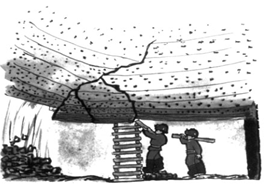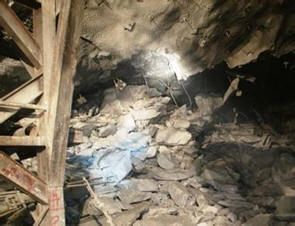

Evolution of stress and fracture in mining
Ming: Mining is the
extraction of valuable minerals or other geological materials from the earth
usually from an orebody, lode, vein, seam, reef or placer deposits. These
deposits form a mineralized package that is of economic interest to the miner.
Ores recovered by mining include metals, coal, oil shale, gemstones, limestone,
chalk, dimension stone, rock salt, potash, gravel, and clay. Mining is required
to obtain any material that cannot be grown through agricultural processes, or
created artificially in a laboratory or factory. Mining in a wider sense
includes extraction of any non-renewable resource such as petroleum, natural
gas, or even water.
Mining of stones and metal has been a human activity since pre-historic times.
Modern mining processes involve prospecting for ore bodies, analysis of the
profit potential of a proposed mine, extraction of the desired materials, and
final reclamation of the land after the mine is closed.
Mining operations usually create a negative environmental impact, both during
the mining activity and after the mine has closed. Hence, most of the world's
nations have passed regulations to decrease the impact. Work safety has long
been a concern as well, and modern practices have significantly improved safety
in mines.


2. Visualization method for three-dimensional stress fields of surrounding rocks during roadway excavation(WX)
3. Some dissertations for evolution of stress and fracture in mining engineering in CUMTB